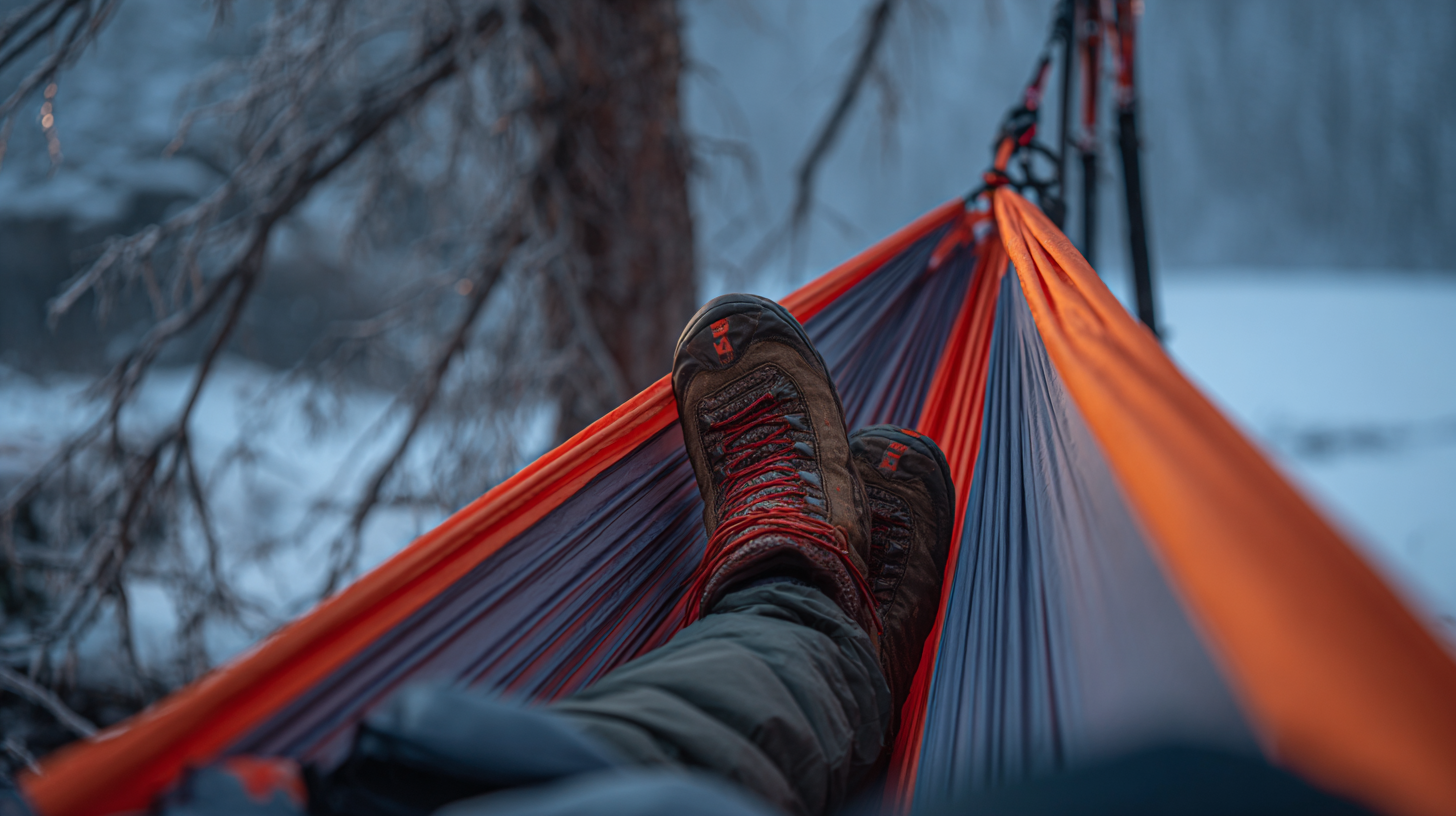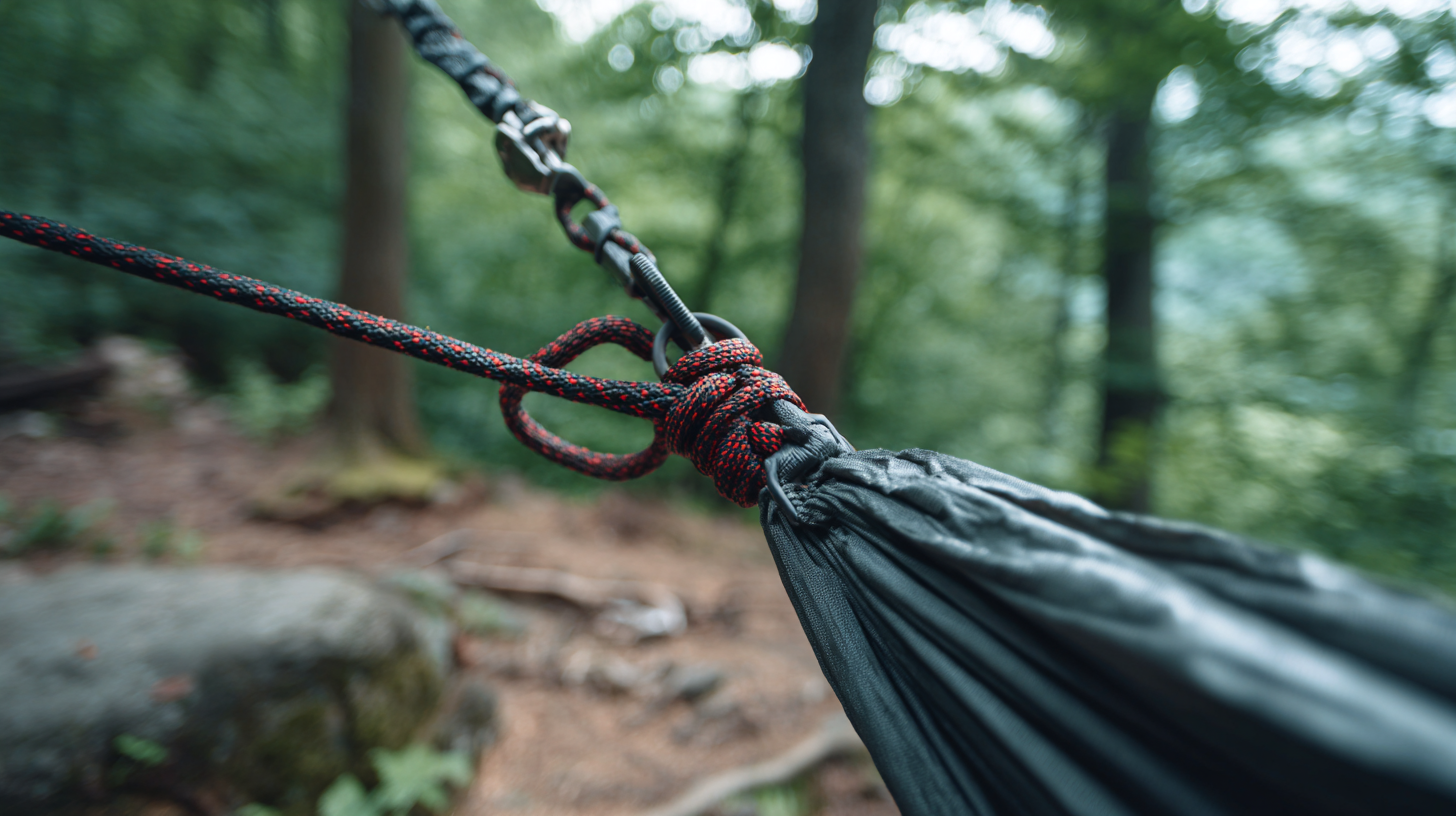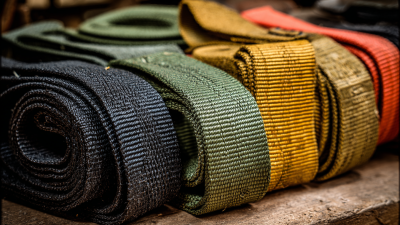As outdoor activities gain popularity among enthusiasts of all levels, the importance of reliable gear becomes undeniable. Among these essential tools, the "Nylon Sling" stands out due to its remarkable versatility and strength. According to the Outdoor Industry Association, approximately 50 million Americans participated in outdoor recreational activities in 2021, driving the demand for durable and efficient equipment. Nylon slings, known for their impressive weight-bearing capacity and resistance to environmental wear, have become a staple for climbers, hikers, and anyone engaging in outdoor sports. With a tensile strength that can exceed 9,000 pounds, nylon slings offer unmatched reliability, making them an indispensable asset for safety-conscious adventurers. This comprehensive guide will delve into the various applications of nylon slings, ensuring that outdoor enthusiasts are equipped with the knowledge they need to maximize their performance in the great outdoors.

When it comes to outdoor adventures, nylon slings stand out as indispensable tools, offering unparalleled versatility for enthusiasts. Firstly, their durability is a significant reason to incorporate them into your gear. Made from strong synthetic fibers, nylon slings can withstand harsh weather conditions and heavy loads, making them perfect for everything from climbing expeditions to camping setups. This resilience ensures that they maintain their integrity in challenging environments, offering peace of mind to adventurers who rely on their gear to perform reliably.
Secondly, nylon slings are exceptionally lightweight and easy to carry. Unlike bulkier equipment, slings can be easily packed into a backpack without adding unnecessary weight, allowing outdoor enthusiasts to travel efficiently. Moreover, their adaptability enables them to serve multiple functions, whether for securing gear, building shelters, or even rescuing a fellow adventurer in need. The ability to quickly and effectively pivot their use makes nylon slings a valuable addition to any outdoor toolkit, enhancing the overall experience and safety of adventures in the great outdoors.
When it comes to selecting the right nylon sling for your outdoor adventures, there are several key considerations to keep in mind. First, ensure the sling's load capacity matches your intended uses – whether for climbing, camping, or hauling gear. It's crucial to check the manufacturer's specifications and choose a sling that can support the weight you'll be working with.

Another important factor is the length of the sling. A longer sling provides versatility for various setups, while a shorter one is easier to manage and can reduce weight in your pack. Consider your specific needs; for instance, if you frequently navigate tight spaces, a compact sling may be preferable.
Additionally, pay attention to the stitching and construction quality, as these elements directly influence the sling's reliability and safety.
Lastly, take into account the environmental conditions in which you'll be using the sling. Some slings are treated for increased UV resistance, while others might be designed to withstand moisture or abrasion. Researching the right material and features will ensure that your nylon sling not only performs well but endures the rugged demands of the outdoors.
Nylon slings are celebrated for their strength and versatility, making them essential gear for climbing enthusiasts. However, their applications extend far beyond vertical adventures. A recent industry report indicates that the outdoor gear market is projected to reach $21 billion by 2027, with nylon slings playing a pivotal role in various outdoor activities. For outdoor enthusiasts, understanding these alternative uses can maximize the utility of their gear.
One creative application is using nylon slings for securing tarps. They provide reliable support for shelter setups, allowing campers to create protection from rain or sun with ease. Additionally, nylon slings can be employed for gear organization, serving as effective storage solutions when tied off on trees or inside vehicles. Reports suggest that 30% of outdoor enthusiasts prioritize safety and organization during their trips, further justifying the multifunctionality of nylon slings.
Moreover, nylon slings can contribute to rescue operations or first aid situations. Their robust nature allows them to safely carry injured individuals or support improvised splints, showcasing their lifeline potential. As outdoor activities evolve, the innovative uses of nylon slings affirm their status as a must-have for any outdoor enthusiast looking to enhance their experience.
| Use Case | Description | Benefits |
|---|---|---|
| Towing a Canoe | Use nylon slings to secure and tow canoes on trailers. | Strong, lightweight, and resistant to water. |
| Camping Gear Organization | Hang gear in a tree or vehicle using slings for better access. | Keeps items off the ground and organized. |
| First Aid Sling | Create a makeshift arm sling for injuries. | Provides support and is easy to implement. |
| Shade Canopy | Tie fabric or tarps between trees for shade. | Provides protection from sun and rain. |
| Bear Bag System | Hang food high in trees to avoid wildlife. | Keeps food safe from animals while camping. |
| Lifting Heavy Objects | Use slings to lift heavy gear or objects. | Distributes weight evenly, reducing strain. |
| Rescue Operations | Employ slings in rescue scenarios for safer extractions. | Durable and reliable under high stress. |
| Anchor Point | Create anchor points for securing equipment. | Supports multiple configurations for stability. |
| Animal Restraint | Use slings to temporarily tie or secure pets. | Adaptable and gentle on animals. |
| DIY Projects | Incorporate nylon slings into various DIY outdoor projects. | Flexible use for creative problem solving. |
When it comes to outdoor activities, nylon slings are beloved for their strength, versatility, and lightweight characteristics. However, to maximize their lifespan, proper maintenance is crucial. One essential tip is to regularly inspect the slings for signs of wear and tear, such as fraying or discoloration. According to industry experts, even minor damage can significantly affect a sling’s load-bearing capacity, which is critical for safety during high-stakes adventures.

Another important maintenance practice is proper cleaning. Nylon slings should be washed in mild soap and warm water to remove dirt and grit that can degrade the fibers over time. Reports indicate that contaminants like salt and sand can cause premature wear, so rinsing slings thoroughly after exposure to such elements is advised. Additionally, storing slings away from direct sunlight and moisture helps prevent UV degradation and mildew growth, further extending their usability. Adopting these simple yet effective maintenance strategies ensures that outdoor enthusiasts can rely on their nylon slings for years to come.
When using nylon slings outdoors, safety should be the foremost priority. One crucial consideration is the load capacity. Each sling has its specific weight limit, and exceeding this limit could result in catastrophic failure. Always check the manufacturer's guidelines and ensure that you are using a sling designed for the intended weight and type of load.
Another important factor is the condition of the sling. Regularly inspect your nylon slings for signs of wear, fraying, or damage. Any visible deterioration can compromise the sling's integrity, posing serious risks. Additionally, keep in mind environmental factors such as exposure to UV light, which can weaken nylon fibers over time. When not in use, store slings in a cool, dry place to prolong their lifespan and reliability.
Lastly, proper knot tying is essential for safety. Knowing how to tie secure, appropriate knots can make a significant difference in the effectiveness of your sling setup. Ensure that knots are dress and tight, reducing the chance of slipping or losing your load. By adhering to these safety considerations, outdoor enthusiasts can confidently utilize nylon slings for various activities while minimizing risks.






